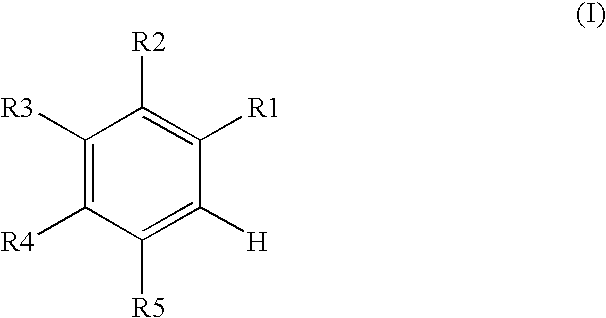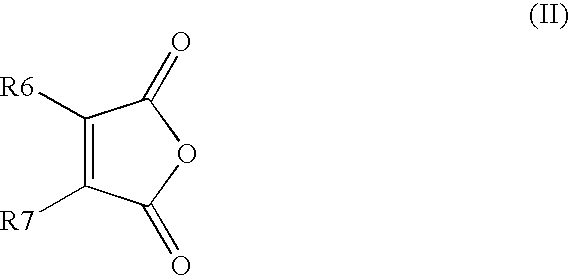Process for producing 4-phenyl-4-oxo-2-butenoic ester derivative
a technology of phenyl-4 oxo-2 butenoic acid and process, which is applied in the preparation of carbonyl compounds, organic chemistry, carboxylic compound preparations, etc., can solve the problems of difficult industrial scale operation, long reaction time, and difficult to obtain 4-phenyl-4 oxo-2-butenoic acid derivatives as starting materials, etc., to achieve high purity, low cost and industrial scale
- Summary
- Abstract
- Description
- Claims
- Application Information
AI Technical Summary
Benefits of technology
Problems solved by technology
Method used
Image
Examples
example 1
Synthesis of ethyl (E)-4-(3,4-dimethoxyphenyl)-4-oxo-2-butenoate
[0075]Into a 500 ml four-neck flask were charged 66.9 g (0.682 mol) of maleic anhydride, 150 ml of chlorobenzene, 71.6 ml (0.546 mol) of diethyl sulfate under a nitrogen atmosphere. Then, the whole was cooled to 10° C. or lower and 67.6 g (0.507 mol) of aluminum chloride was added thereto. While temperature was maintained at 10 to 15° C., 25 ml (0.195 mol) of 1,2-dimethoxybenzene was added dropwise, followed by 4 hours of reaction. After termination of the reaction was confirmed by HPLC analysis, the reaction solution was added dropwise to 200 ml of a 1N hydrochloric acid aqueous solution cooled to 0° C. to decompose excess aluminum chloride. After liquid separation, the organic layer was washed with 200 ml of a 10% sodium bicarbonate aqueous solution to remove excess maleic anhydride. After the solvent was removed by evaporation under reduced pressure, the residue was crystallized from 5 ml of ethanol to obtain 36.2 g ...
example 2
[0076]Synthesis was conducted under similar conditions to those in Example 1 except that 0.186 g (0.975 mmol) of copper iodide was added as a reaction accelerator.
example 3
Synthesis of ethyl (E)-4-(3-chloro-4-methoxyphenyl)-4-oxo-2-butenoate
[0079]Synthesis was conducted under similar conditions to those in Example 1 except that 23.2 ml (0.195 mol) of 1-chloro-2-methoxybenzene was added dropwise instead of 25 ml (0.195 mol) of 1,2-dimethoxybenzene in Example 1. After the solvent was removed by evaporation under reduced pressure, the residue was crystallized from 5 ml of ethanol to obtain 35.7 g (yield 68.0%) of the aimed compound as light yellow crystals. As a result of HPLC analysis, the purity was found to be 99.6%.
PUM
| Property | Measurement | Unit |
|---|---|---|
| temperature | aaaaa | aaaaa |
| temperature | aaaaa | aaaaa |
| temperature | aaaaa | aaaaa |
Abstract
Description
Claims
Application Information
 Login to View More
Login to View More - R&D
- Intellectual Property
- Life Sciences
- Materials
- Tech Scout
- Unparalleled Data Quality
- Higher Quality Content
- 60% Fewer Hallucinations
Browse by: Latest US Patents, China's latest patents, Technical Efficacy Thesaurus, Application Domain, Technology Topic, Popular Technical Reports.
© 2025 PatSnap. All rights reserved.Legal|Privacy policy|Modern Slavery Act Transparency Statement|Sitemap|About US| Contact US: help@patsnap.com



